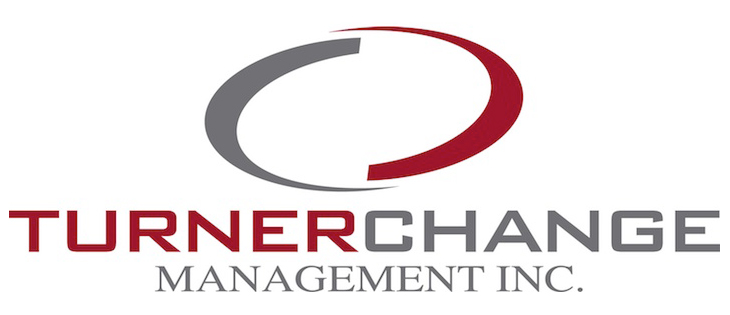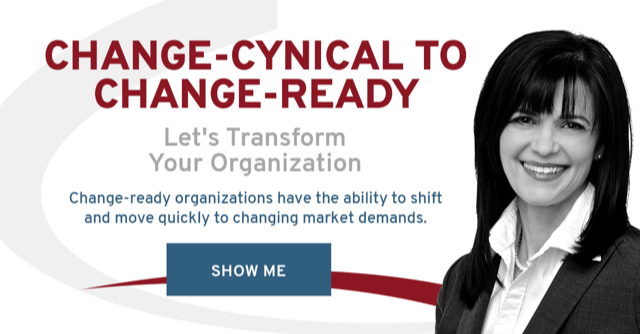Do You Know the Most Important Part of Your Change Management Plan?
The most important part of your change management plan is not the transition activities or deliverables. It’s not even the schedule. These are important, of course, but not the most important.
Many organizations see their changes fail because they do not actively involve the people affected in the planning process. For example, a McKinsey survey of C-Suite executives found that only three percent of organizations reported success when managers and frontline employees were not involved[1].
Involvement is Not Optional
When I get called in to help with a change event, I still hear leaders say, “we can’t involve everyone; our organization is too large,” or “we don’t have the time to involve everyone.” These and other similar statements reflect a belief that the involvement of the people affected is optional. It is not.
As I work with my clients, I coach them to involve their employees or team members actively. If they expect people to adopt new activities, learn new ways of working, let go of old activities or roles, then by default, they are involved. To assume otherwise is like believing you will get fit if I work out.
If you are planning a change initiative, the question you as a leader need to ask is, “what is needed to involve the people affected in the change process actively?”
Active involvement can be a tough sell for leaders. The push-back I hear from leaders about involving people in the change is that it will create confusion, undermine their authority, and slow down the process.
Defining Active Involvement
Involving your employees or team in the change won’t do any of the above. Instead, active involvement enables commitment and increases performance. In addition, it allows you to tap into the collective intelligence of your organization.
What active involvement is not every person making every decision.
It is also not:
- Managing by consensus.
- A small group of people creating a change management plan and then attempting to”sell or implement it” to the rest of the organization.
- Sending out a document, presentation or other material and asking for feedback.
Active involvement during change creates the opportunity, structures, and timing for the people affected to work with you. When you involve the people affected, they feel included. They participate in the decisions (appropriate to their level) and assist in creating and maintaining the new desired state. That’s why involvement is an essential element for sustainable and healthy change.
Excluding people raises the potential for failure.
Exclusion Increases The Risk of Failure
There are at least three reasons exclusion increases your risks during organizational change.
- One is our built-in need for social connection. This need for social connection is one of our survival mechanisms. As a result, we are always and subconsciously on the alert for cues in our environment that may signal a social reward (feeling a sense of belonging to a team) or a social threat (feeling isolated or that people view us negatively).
- During times of uncertainty, like organizational change, one typical response is to become hyper-vigilant. In this state of high alert, we become even more sensitive to subtle verbal and non-verbal shifts in our environment.
- Our negativity bias, all humans have a built-in negativity bias. It is our default system, and it means we are more sensitive to threats than rewards. We also remember negative experiences more vividly than positive experiences. Our negativity bias can also affect our relationships because we tend to look at what’s wrong before considering what’s right.
These three reasons create the conditions to derail your change initiatives when you fail to include people in your change planning.
For example, a manager shared with me that during a large re-organization she felt hurt when she saw a group of co-workers having lunch because she hadn’t been invited. Even when it turned out the lunch was more spontaneous than she had initially perceived it, the fear of exclusion lingered.
At the Living and Leading Change, a participant shared the frustration and anger one team felt when they arrived on Monday to find their manager had rearranged their workspace. It was part of a planned reorganization. The intent had been to save the employees time and maintain productivity. However, the lack of involvement of the people affected negated any of the positive intentions.
You might be thinking that the employees and staff need to toughen up. But that response ignores our (all humans) built-in response to exclusion. Multiple research studies have shown that exclusion sets off the same neuro-receptors in our brain as physical pain[2]. Therefore we can experience and react to being excluded as if it was physical pain. In addition, feeling excluded also reduces our willingness to engage in a situation. The social pain people feel when they feel their sense of inclusion is threatened will push them to avoid the situation.[3].
Actively involving people throughout the change process increases your potential for success.
Inclusion Increases Your Potential for Success
It can be easy to dismiss active involvement as soft and nice to have. Yet, it has an impact on your success with change. For example, in a series of studies exploring the effects of exclusion and inclusion, the results demonstrated that people who felt included were more cooperative and more willing to help[4]. Another study found people experienced a decline in cognitive performance when they felt excluded.
Many other studies, our clients, and my own experience demonstrate the value and importance of active involvement. For example, one client implemented the same technology to two different groups. In the first group, the IT director used a traditional project approach. In the second group, he actively involved people in all aspects of the planning. As a result, the actively involved group showed higher levels of adoption faster, which led to more sustainable change.
It can feel as if the change is being done to us when we feel excluded, which will naturally set up a defensive response. And it is often this type of normal defensive response that gets labelled as resistance.
Active involvement enables us to feel the change is being done with us. It builds readiness and the commitment to take action toward the intended outcome.
Active involvement Doesn’t Happen By Accident
Active involvement of the people affected is not just nice to have. It is a critical part of your change management planning. And knowing how to get that active involvement is the difference between sustainable healthy change and another failed implementation.
With a planned and structured approach for active involvement, you can use the energy of the people affected to work with you to achieve the intended outcome. As a result, you will use less time, prevent resistance, see a higher return on your investment, and build your organizational change capacity.



